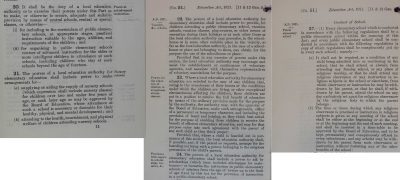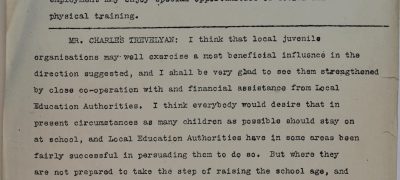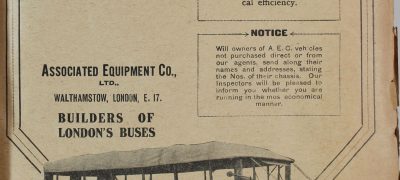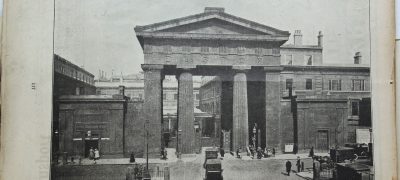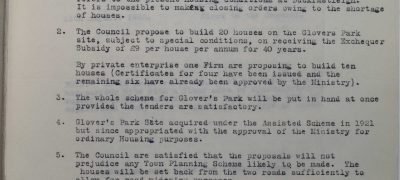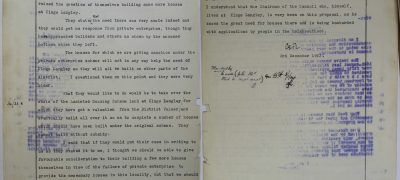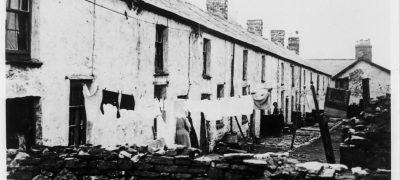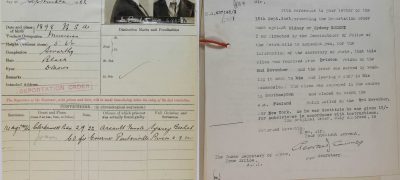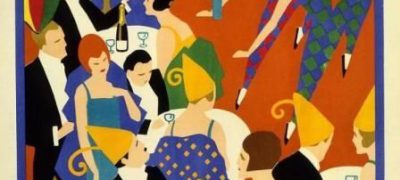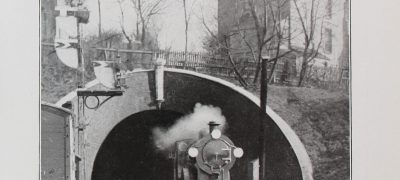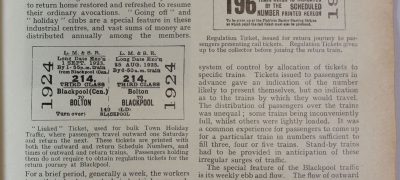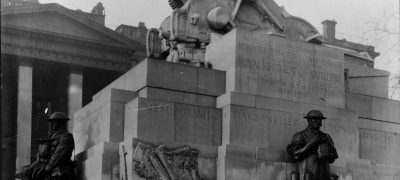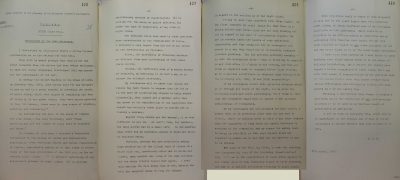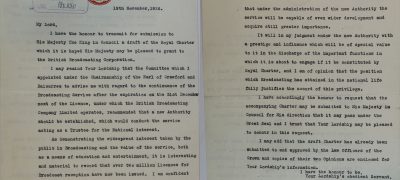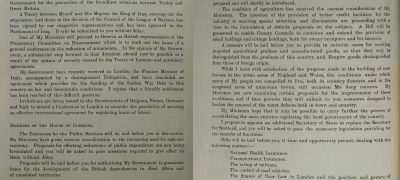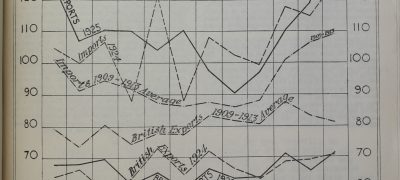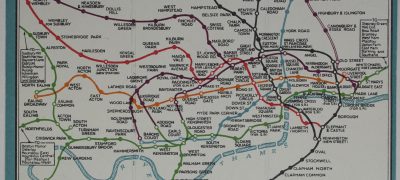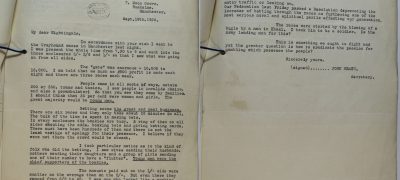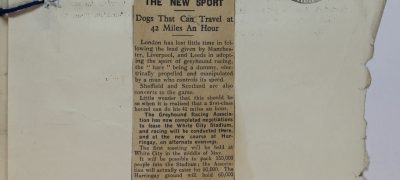
Download documents and transcripts
Teachers' notes
The purpose of this two part document collection is to allow students and teachers to develop their own questions and lines of historical enquiry on various social, economic and political aspects of 1920s Britain. The document icons are labelled so it is possible to detect key themes at a glance and they are arranged in chronological order.
In this part (part 2) the themes covered include:
- Education
- Housing
- BBC
- Transport: motors cars and trains
- Holidays, nightclubs and dog racing
- 1921 Census entries for significant people in the decade
Please also note that in some cases, linked sources on the same same topic appear in the same popup window so it is necessary to scroll from side to side to explore them in detail.
Students could work with a group of sources or source type on a certain theme or linked themes. The documents should offer them a chance to develop their powers of evaluation and analysis and support their course work. Alternatively, teachers may wish to use the collection to develop their own resources or encourage students to ‘curate’ their own ‘exhibition’ of the most significant sources on the topic. More documents can be found in 1920s Britain (Part 1) Decade of conflict, realignment and change? Students could also use more documents from our Cabinet Papers website.
Finally, there is an opportunity to consider film sources as interpretations of these events in relation to the documents by following the links to Pathé and the BFI provided here.
Connections to the Curriculum
These documents can be used to support any of the exam board specifications covering the political, social and cultural aspects of 20th century British history, for example:
AQA: GCE History
Wars and welfare: Britain in transition 1906-1957
Society in crisis 1906-1929
Edexcel: GCE History
Study in Breath: Britain Transformed 1918-1997
OCR: GCE History
Period study: Britain 1900-1951
Introduction
By Professor Keith Laybourn, Diamond Jubilee Professor of the University of Huddersfield
For 1920s Britain, in terms of education policy, the Establishment assumed that the working classes only required a basic education. The first Labour government argued that children should stay at school for longer and set up the Hadow Committee on Adolescent Education in 1924. This reported in 1926, at the time of a Conservative government and reflected the Establishment mind for ‘equality of opportunity’ rather than ‘universality of provision’. It simply suggested that children over the age of 11 should be educated in a secondary school based on an 11 plus exam deciding whether that should be a grammar school, a central or technical school or merely a secondary modern school. Equality of opportunity, by virtue of the 11 plus test for all, merely perpetuated inequality. Most working-class children found that their education changed little in the 1920s, except from 1921 the official school leaving age was made 14 years old.
The widening of political rights ensured that the working classes, who represented three-quarters of the nation, saw some improvements in their living conditions and their leisure and lifestyle opportunities. Neville Chamberlain introduced the 1923 Housing Act, which provided subsidies to private house builders for the building of private homes. However, as Hemel Hempstead, and many other councils found, the building of private houses did not provide for the rented accommodation which most families needed and the Council ‘raised the question of themselves building some houses at Kings Langley’. There were some subsidies for councils to build rented accommodation under the Chamberlain Act but the big boost for this came with the John Wheatley Housing Act of 1924, introduced by the first Labour government. Providing subsidies for up to forty years this stimulated the enormous growth of relatively cheap council accommodation which has been a major feature of British housing accommodation ever since. These houses were much bigger and better than the slum accommodation they replaced and were partly responsible for some improvement in health and declining infant mortality rates after the First World War. Many towns expanded as a result of both private and public house building and London, particularly, expanded into suburbia as its underground and over-ground railway systems permitted fast, easy and cheap travel.
The opportunities for ‘workers at play’ also increased dramatically during the 1920s with the development of cinemas, the ‘talkies’, and sports such as football. Seaside holidays, in particular, developed rapidly. The British railway system reorganised itself in the 1920s and increasingly targeted the growing seaside towns of Britain – such as Blackpool, Hastings and Scarborough – which became some of the fastest growing urban communities of the inter-war years. Blackpool, with its five million visitors a year, became the leading seaside resort in Britain, and was dubbed ‘Manchester by the Sea’.
Gambling opportunities for the working classes also widened. The football pools grew enormously in the 1920s, with Littlewoods, run by the Moores brothers, soon dominating the leisure expenditure of the working classes. Even more emphatic was the growth of greyhound racing, mushrooming growth from the date of the first meeting at Belle Vue, Manchester, on 24 July 1926. By the end of the 1920s there were upwards of 200 tracks and attendances of more than twenty million per year. Winston Churchill saw greyhound track as an ‘animated roulette wheel’ and John Buchan, MP and author of The Thirty-Nine Steps referring to ‘the illuminated ribbon of turf’, as he unsuccessfully attempted to introduce a Dog Racing Bill in 1928 to allow local authorities to ban the construction and opening of greyhound tracks. The Baldwin Conservative government at the time feared that introduction of such legislation would look like ‘class legislation’.
The formation of the British Broadcasting Company in December 1922 saw the development of listening to the radio for pleasure. Radio broadcasting was limited to eight stations in March 1923. In 1926 this became the British Broadcasting Corporation and with John Reith as Director-General in 1927, claiming an independence from government control which he never demonstrated during the General Strike.
The attempted control of working-class leisure occasionally extended to those areas where the working and middle classes met. The wartime government had imposed some restrictions on night clubs in 1915. Ten years later the Christian churches in Britain, led by the Bishop of London, sought to revive the act to prevent uncontrolled drinking. Indeed censorship remained the theme of the 1920s. Indeed, Jonathan Cape Ltd published Radclyffe Hall’s The Well of Loneliness about lesbian love, which the Home Office in 1928 thought to prosecute for ‘obscene libel’ despite its plea for toleration and the recognition of ‘sexual perversion amongst women’, was subject to a press campaign led by the Sunday Express and a successful prosecution for obscenity.
Whilst social change could create battlegrounds of resistance to technological developments were more difficult to deny. Indeed, this was true of the automated engine for the 1920s became the new age of the car. There were around 300,000 motorised vehicles in Britain in 1920 and this number had increased six fold by 1929. Competing with other slower occupiers of the road – horse-driven vehicles, trams and pedestrians, ‘who held the right of saunter’ – motorised vehicles rapidly drove other road users off the road. Cars and motorised vehicles killed about 1,000 people and injured about 50,000 a year in 1920. By 1929 these figures had risen to more than 6,000 deaths and 220,000 injuries per year. The average police constable spent about a sixth of his time on road and traffic duties in the 1920s, directing the traffic, patrolling the roads, and trying to avoid the congestion caused by the narrowness of the streets, which the Bradford City Police and the Metropolitan Police, for instance, saw as the main cause of congestion and accidents. This was at a time when the Home Office and Government were making attempts to control police expenditure as part of a general round of cuts. As a result from the late 1920s onwards experiments with automated policemen, the traffic lights, and moves towards the creation of a Highway Code, began the process whereby the police saved on expenditure and motorists and pedestrians were increasingly separated – the motorists ruling the roads and the pedestrians being channelled into crossing places and pavements in a relationship, sponsored by the AA and RAC, which made the pedestrian rather than the motorist responsible for their own road safety. Policing was transformed as a result of the expansion of the car culture. Police numbers were inadequate to deal with the demands placed upon them. Some faltering steps towards employing women police officers, but by the end of the 1920s there were fewer than a hundred employed.
If the motor age had begun to change British society and policing, the aeroplane transformed the lives of only a few at the time, though many in the future. Aeroplanes had been used for military purposes in the First World War and were then increasingly used for civil aviation in the 1920s as new airports, particularly Croydon in London, were opened. They offered a sense of modernity and adventure in the public mind and Croydon was the starting point of the flight of the famous aviator Amy Johnson, who undertook the first solo flight from England to Australia in 1930. She received her licences to fly ‘All types’ of flying machines on 6 July 1929.
In foreign affairs, although the really serious international issues of the inter-war years occurred in the 1930s, there were immediate post-war concerns about international relations governed by a general desire for continued peace. The Treaty of Versailles of 1919 had organised the post-war peace but imposed upon Germany reparation payments which many feared would lead to further friction and possible war. James Ramsay Mac Donald, the Labour Prime Minister, attempted to get these removed through The Hague Conference of 1924 and to reduce the number of capital ships at the London Conference of 1924 but the Locarno Conference and the seven Treaties of Locarno side tracked this approach by getting Germany and the major powers to simply declare that they would not go to war again and by guaranteeing the western borders of territorial arrangement agreed at Versailles whilst leaving the question of the eastern borders, particularly those between Germany and Poland, open to further discussion. These promises were not to be lasting.
The 1920s can therefore be seen as a decade of crucial important political, economic and social change, shaped particularly by the events and impact of the First World War, the demand for political equality for all men and women, and by technology such as the BBC, the mechanical hare and the car. It was a decade of conflict, realignment and change. Inequalities of employment, education, class and gender persisted but with political power falling into the hands of a working-class electorate, these issue could no longer be easily dismissed and ignored.
External links
https://www.britishpathe.com/ – Explore archive footage relating to 1920s Britain.
https://www.screenonline.org.uk/film/id/1364849/index.html – Take a look at 1920s stars and feature films.
https://www.nationalarchives.gov.uk/20s-people/20-people-of-the-20s/ – Read the stories of 20 different people who lived in the 1920s.
Back to top
